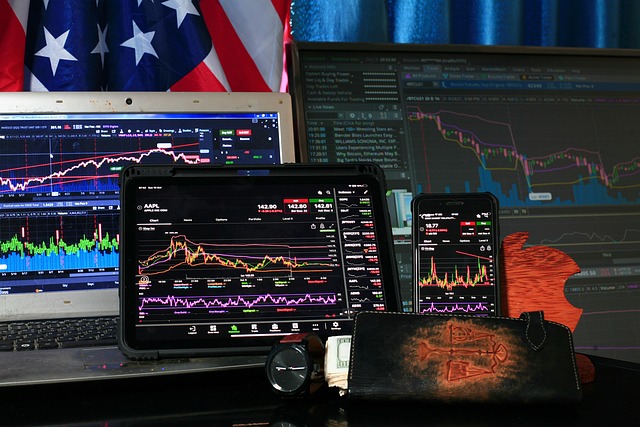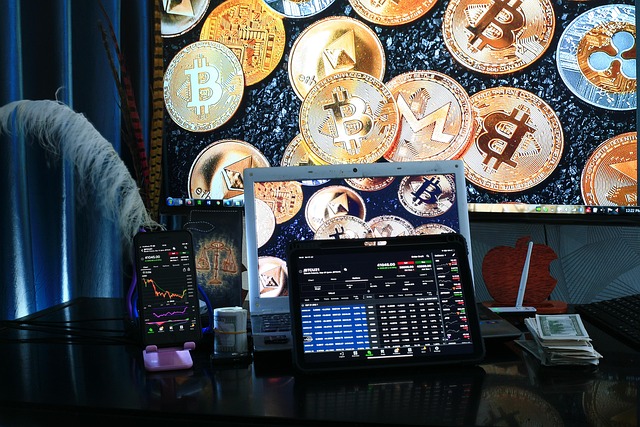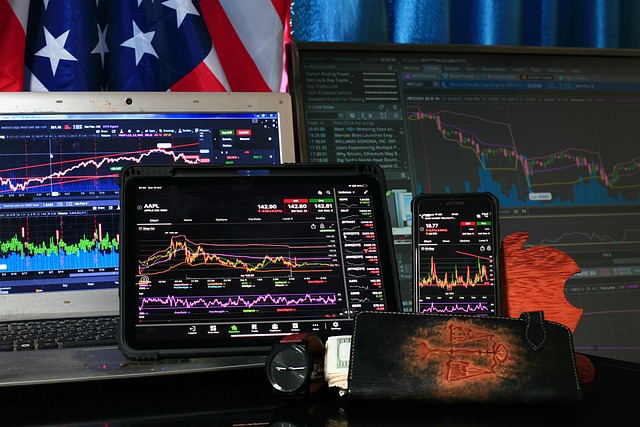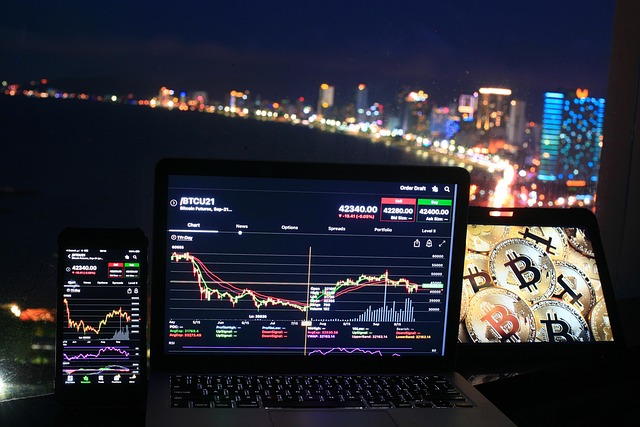What Is the Best Online Trading Platform for Cryptocurrency: 2025 Guide
Author: Jameson Richman Expert
Published On: 2025-10-20
Prepared by Jameson Richman and our team of experts with over a decade of experience in cryptocurrency and digital asset analysis. Learn more about us.
What is the best online trading platform for cryptocurrency is a question every investor asks before buying their first Bitcoin or trading an altcoin. This guide walks you through objective criteria, real-world examples, platform recommendations by use case, fee comparisons, and security best practices so you can choose the right platform for your goals in 2025. You’ll learn how to evaluate liquidity and trading volume, compare maker/taker fees, use advanced tools like TradingView, and avoid common pitfalls.

Why choosing the right crypto trading platform matters
Selecting the optimal crypto trading platform can dramatically affect your trading costs, execution quality, security of funds, and the variety of products available (spot, margin, derivatives, staking). Poor choices can lead to higher fees, slippage on large orders, slow customer service, or worse—losses from hacks and insolvency. Liquidity and volume influence how easily you can enter or exit positions; if you’re unfamiliar with why volume matters, see this explanation on trading volume and its impact.
Top evaluation factors for any crypto trading platform
Use this checklist to score platforms objectively. Each factor impacts user experience and financial outcomes.
- Security & custody — cold storage policies, proof-of-reserves, audits, insurance coverage.
- Fees & pricing model — maker/taker fees, spreads, deposit/withdrawal charges, network fees.
- Liquidity & trading volume — ensures tight spreads and minimal slippage for large orders.
- Product selection — spot markets, futures, options, staking, margin, OTC desks.
- User interface & tools — charting, order types, mobile apps, APIs, demo trading.
- Regulation & compliance — jurisdiction, licenses, KYC/AML processes.
- Customer support & reputation — response times, incident history, community feedback.
- Geographic access — availability in your country, fiat on-ramps, supported payment methods.
Security & custody (deep dive)
Security is non-negotiable. Look for:
- High percentage of assets held in cold storage.
- Regular third-party audits and published proof-of-reserves.
- Multi-signature wallets for treasury custody.
- Bug bounty programs and strong incident response disclosures.
- Insurance policies that cover exchange-level theft (note: insurance often excludes customer key loss).
If you’re comparing a non-exchange broker or forex-like provider, evaluate their separate risk profile. For example, this in-depth analysis asks whether a broker is safe to trade with and explains risks you should assess: Is XM Trading Safe? — deep analysis.
Fees & pricing model
Fees are more than the number on a pricing page. They include spreads, maker/taker fees, withdrawal cost, and any hidden fees (fiat conversion, stablecoin minting, or network congestion surcharges). Read fee breakdowns for specific examples such as how Bybit fees work and consider token-specific sell fees like those discussed in this XRP fee guide: XRP sell fee explained.
Liquidity, trading volume, and slippage
High liquidity reduces slippage on market orders. If you plan to move large sizes or trade frequently, prioritize platforms with deep order books and high 24h volume. For background on why volume is critical and how it’s measured, see the trading volume resource linked earlier.
User interface, tools, and integrations
Advanced traders need robust charting, order types (limit, stop-limit, OCO), API access, and integrations such as TradingView. If TradingView connectivity is important to you, check platform-specific guides (for example, Bitget TradingView login guide).
Top platforms in 2025 — comparison and recommended uses
The "best" platform depends on your needs. Below are common profiles and recommended exchanges/brokers.
1) Best for beginners and fiat on-ramps: Coinbase
Why: Extremely user-friendly interface, straightforward fiat on-ramps, strong regulatory posture in the U.S., clear educational resources.
Pros: Simple buy/sell flows, mobile-first design, insurance coverage for custodial assets, reputable brand.
Cons: Higher fees compared to some competitors, limited advanced order types for serious traders.
2) Best for global liquidity and altcoins: Binance
Why: Massive liquidity across spot and derivatives, wide altcoin selection, low fees for high-volume traders.
Pros: Deep order books, extensive products (futures, options, staking, savings), competitive fee discounts.
Cons: Regulatory complexities in some jurisdictions; U.S. residents may need to use Binance.US with reduced features.
3) Best for security-focused traders: Kraken
Why: Strong reputation for security, conservative approach, proof-of-reserves efforts, good regulatory compliance in many jurisdictions.
Pros: Solid security history, margin trading, reasonable fees, good support.
Cons: UI can feel less modern than consumer-first apps.
4) Best for derivatives & professional traders: Bybit
Why: Competitive derivatives market, professional charting and order types, deep liquidity in BTC/ETH futures.
Pros: Low maker/taker fees and robust matching engine. For a detailed look at Bybit’s fee structure, review this Bybit fees guide.
Cons: Not ideal for simple fiat purchases in some regions; check local availability and KYC requirements.
5) Best for TradingView users and social charting: Bitget
Why: Bitget emphasizes trading tools and often integrates with charting platforms. If you use TradingView to analyze markets, see this practical guide on logging into Bitget with TradingView: Bitget TradingView login.
Pros: Tight integration for charting, strong derivatives offering, features catering to copy traders.
Cons: Regional restrictions and KYC requirements can vary.
6) Best regulated broker-style options (for some investors): eToro, Gemini
Why: Broker-style platforms that emphasize regulatory compliance and ease of use. Suitable for U.S. retail investors who want regulated exposure with fewer frictions.
Pros: Regulatory clarity, fiat support, social/copy trading (eToro).
Cons: May have higher spreads and limited advanced trading features.

How to compare fees effectively: an actionable method
Don’t just look at headline fees—calculate total round-trip cost for your typical trade size. Use the following method:
- Identify the base maker and taker fee rates (or spread for broker-style platforms).
- Estimate expected slippage (difference between quoted price and executed price) using 0.01–0.5% as a baseline depending on liquidity.
- Add deposit/withdrawal fees (especially for fiat) and blockchain network costs.
- Consider discount programs (token staking, VIP tiers, maker rebates).
Example: If the taker fee is 0.06% and expected slippage is 0.10%, your immediate execution cost is 0.16% of trade value. Add withdrawal fees and any fiat conversion charges to find your total cost. For token-specific costs like selling XRP, consult resources that explain token sell fees in depth: XRP Sell Fee — in-depth guide.
Security checklist and custody best practices
Follow these steps to minimize the risk to your crypto holdings:
- Enable strong two-factor authentication (preferably hardware 2FA keys like YubiKey).
- Use unique, strong passwords and a password manager.
- Avoid leaving large, long-term holdings on exchanges—use hardware wallets for cold storage.
- Enable withdrawal whitelist to limit withdrawals to known addresses.
- Verify exchange audits and proof-of-reserves reports when evaluating custodians.
- Check whether the platform conducts regular internal/external security tests and bug bounties.
Regulatory and investor education resources can help you understand the broader risk environment—see the U.S. Investor.gov crypto resources for consumer guidance: Investor.gov — Crypto Assets.
How to pick the best platform for your use case — practical recommendations
Below are tailored recommendations depending on trading style and priorities:
- Beginner / Buy-and-hold: Coinbase, Gemini — prioritize ease of use, fiat on/off ramps, and regulatory clarity.
- Active spot trader: Binance, Kraken — look for deep liquidity and low taker fees.
- Derivatives / high-frequency trader: Bybit, Bitget, Binance Futures — prioritize matching engine performance, margin options, and fee structures.
- Large OTC trades / institutions: Binance Institutional, Coinbase Prime — choose platforms with OTC desks and tailored liquidity solutions.
- Staking / yield-focused: Binance, Kraken, Coinbase — evaluate APYs, lockup terms, and custodial risk.
- Trader who uses TradingView and advanced charts: Bitget (see TradingView login guide) and platforms with native TradingView or webhook/API support.

Advanced features that matter to professional traders
Professional traders should look beyond fees and into execution quality and toolsets:
- Advanced order types: post-only, IOC, FOK, trailing stops, TWAP/VWAP orders.
- API latency and rate limits: low-latency APIs and generous rate limits help algorithmic strategies.
- Smart order routing and aggregated liquidity: minimizes slippage across venues.
- Integrated charting and 3rd-party connectivity: TradingView/MT integration allows consistent analysis across platforms — example integration details are covered in the Bitget TradingView guide linked above.
- Institutional features: segregated accounts, custody solutions, and compliance reporting.
Practical onboarding steps — from research to your first trade
Follow these step-by-step actions to reduce friction and avoid costly mistakes.
- Shortlist platforms based on geography, fees, and product needs.
- Read user reviews and recent news for security incidents or regulatory actions.
- Open an account and complete KYC with correct identity documents—expect verification delays in busy periods.
- Start with a small deposit to test deposits, trading UX, and withdrawal flows.
- Experiment with different order types on small trades before scaling up.
- Monitor execution and slippage on your trades to validate pricing quality.
- Move long-term holdings to cold storage if you’re not actively trading them.
Common mistakes and how to avoid them
New and experienced traders fall into similar traps. Avoid these common errors:
- Ignoring total costs: Always compute round-trip costs including slippage and withdrawal fees.
- Overuse of leverage: Leverage amplifies losses—only use it with strict risk management.
- Keeping large balances on exchanges: Use exchanges for trading, not permanent custody.
- Lack of plan: Trade with a strategy and risk limits—avoid emotional decisions.
- Failing to keep software updated: Ensure apps and devices are patched to reduce security vulnerabilities.

Regulatory considerations
Regulations vary by country and influence what platforms can offer local users. Before opening an account, confirm:
- Whether the platform accepts residents from your jurisdiction.
- Which licenses it holds (if any) and how it complies with local KYC/AML obligations.
- Consumer protections in case of exchange insolvency—these differ widely.
If you prefer highly regulated providers, broker-style platforms can be preferable for on-ramps and custody. Review platform-specific regulatory disclosures and consult local authorities or consumer protection sites if unclear.
Real-world examples and scenario analysis
Example 1 — A U.S. beginner investor: Coinbase or Gemini are typically the best starting points because they prioritize regulatory compliance and user experience. Expect slightly higher fees but greater simplicity.
Example 2 — A professional derivatives trader: Bybit or Binance Futures often provide the lowest fees and deepest liquidity for futures. Check professional features and leverage options; for fee mechanics, consult a guide like the Bybit fee breakdown linked earlier.
Example 3 — A trader who relies on TradingView and advanced chart setups: Bitget’s integration options may streamline your workflow; please see the Bitget TradingView login guide for how that connectivity works in practice.
Additional resources and further reading
Deepen your knowledge with authoritative resources:
- Cryptocurrency — Wikipedia (background and history)
- Investor.gov Crypto Resources (U.S. consumer guidance)
- Trading volume explained (importance of volume)
- XRP sell fee guide (example of token-specific costs)
- Bybit fees explained (maker/taker mechanics)
- Broker safety analysis (assessing broker-style providers)

Conclusion — answering the question: what is the best online trading platform for cryptocurrency?
There is no single universal answer to what is the best online trading platform for cryptocurrency. The best platform depends on your priorities: security, low fees, liquidity, advanced tools, or regulatory clarity. For most beginners, Coinbase or Gemini provide a safe, straightforward entry. For active spot and derivatives traders seeking deep liquidity and low fees, Binance, Bybit, and Bitget are strong choices—each with trade-offs around regional availability and compliance.
Use the evaluation checklist in this article to compare platforms objectively. Always test with small amounts, enable strong security settings, and move long-term holdings to cold storage. If you need platform-specific details (fees, TradingView integration, token-specific selling costs, or broker safety), consult the linked guides throughout this article to dive deeper into each subject.
Choosing the right platform is an ongoing process—re-evaluate your choice as your trading style, account size, and regulatory landscape change. Trade safely and strategically.